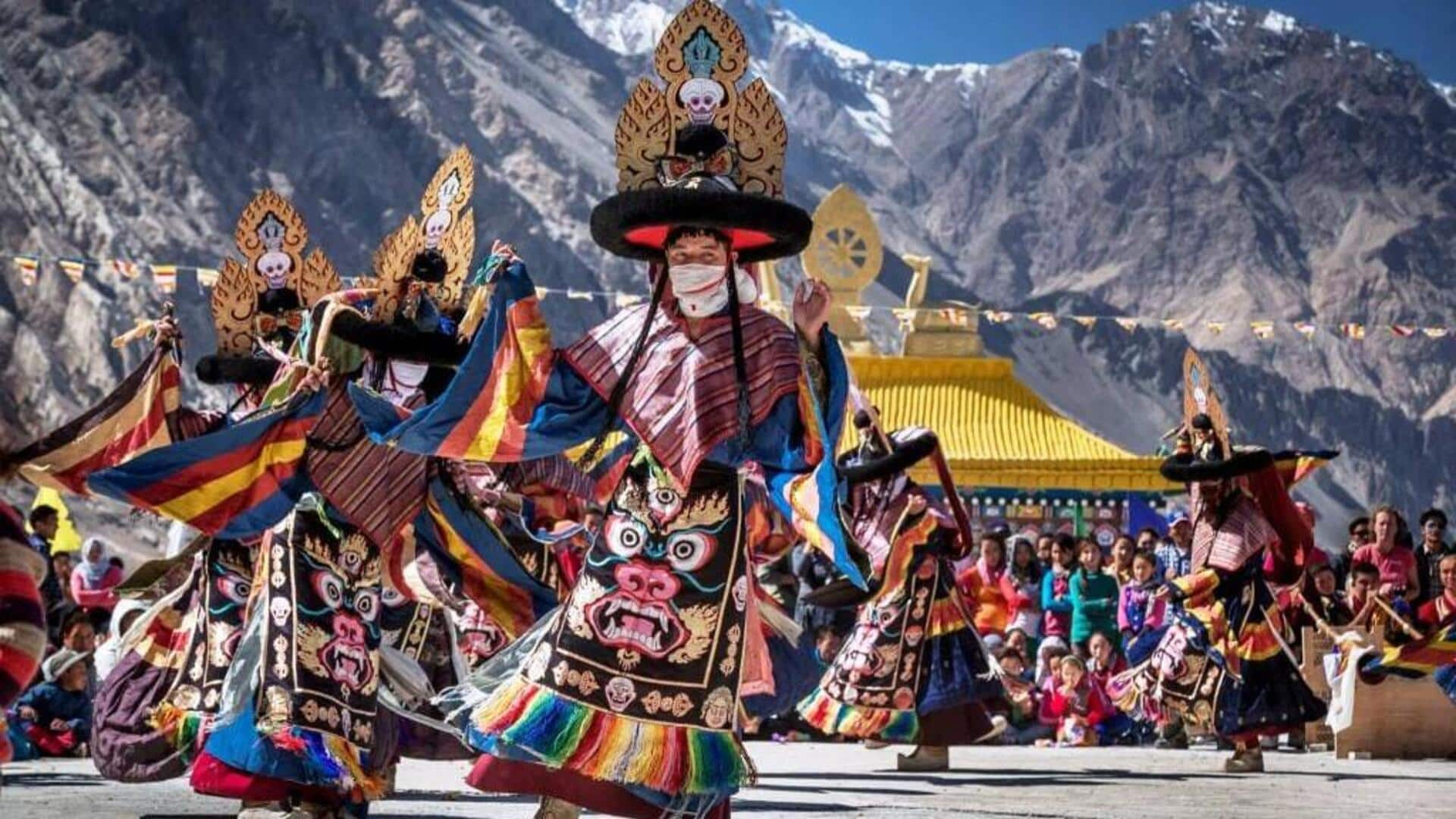
Folk festivals of Himachal Pradesh you must not miss
What's the story
Himachal Pradesh, famous for its picturesque beauty and calm landscapes, also boasts of some of the most unique rural festivals. These festivals beautifully showcase the cultural diversity of the region. They give an insight into the lives and traditions of the natives. Visiting these festivals is an opportunity to witness the lively celebrations. From folk music to dance forms, everything is preserved through generations here. Here are some unmissable festivals in rural Himachal Pradesh.
Kullu Festival
Kullu Dussehra: A grand celebration
Kullu Dussehra is celebrated with much fervor in the Kullu Valley. Unlike elsewhere in India, where Dussehra signals the end of revelries, here it starts on Vijayadashami and continues for a week. The festivities include a magnificent procession with gods from temples across the valley being taken to Dhalpur Maidan. Traditional music and dance performances enhance the mood of the festivities, luring thousands every year.
Minjar Fair
Minjar Fair: A symbolic harvest festival
Held in Chamba district, Minjar Fair is celebrated in July or August as a thanksgiving for a good harvest. The festival's highlight is a colorful procession where locals dress in traditional attire and carry minjars, silk tassels symbolizing ears of corn. The fair features cultural programs, sports events, and local handicraft exhibitions showcasing Chamba's rich heritage.
Lavi Fair
Lavi Fair: Trade meets tradition
Held every November in Rampur Bushahr, the Lavi Fair has been a significant trade event for centuries. Traders from various regions assemble here to barter goods such as woolen products, dry fruits, and handicrafts. Apart from trading, visitors can enjoy folk music performances and witness traditional rituals of local communities.
Phulaich Festival
Phulaich festival: Celebrating nature's bounty
The Kinnaur community celebrates the Phulaich Festival in September or October when flowers bloom profusely in the region. It consists of offering flowers to deities as a mark of gratitude for nature's bounty. The festival features colorful processions with locals dressed in colorful costumes, performing traditional dances, and accompanied by folk songs.
Sazo Festival
Sazo Festival: Honoring ancestral spirits
Villagers in Spiti Valley observe Sazo in January or February as they bid farewell to their ancestral spirits, who return after winter. Offerings made at family shrines are followed by communal feasts where locals share food cooked using locally sourced ingredients. These include grains and vegetables grown organically without any chemical fertilizers or pesticides used throughout cultivation processes. This ensures sustainability practices remain intact within these remote areas, despite modern advancements elsewhere globally today.